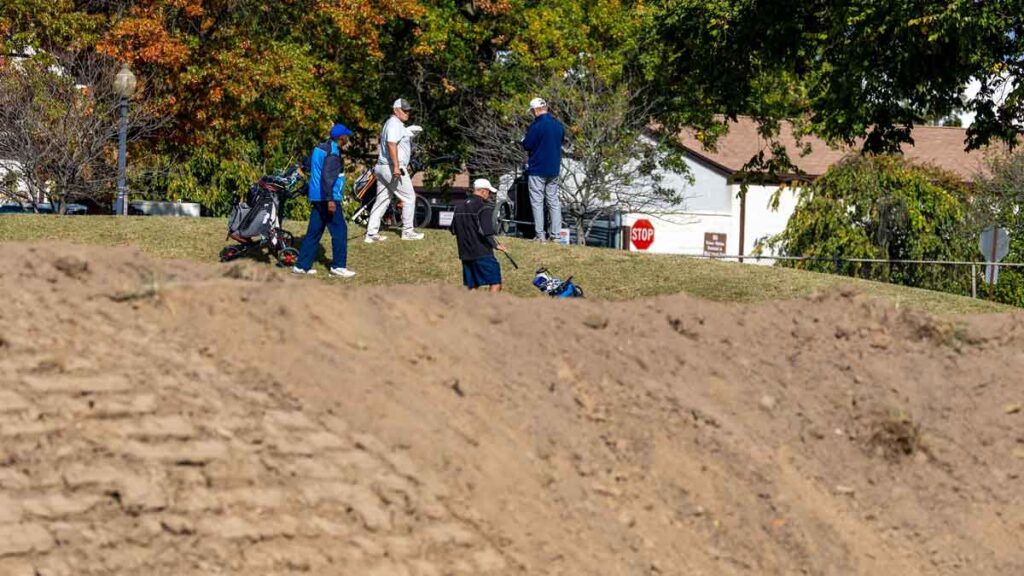The Mystery of the White House Dirt at D.C. Golf Course
In the heart of Washington, D.C., an unexpected transformation is underway at one of the city’s municipal golf courses. This isn’t just any ordinary renovation; it’s a landform created from dirt that has been imported directly from the White House. The sight of heavy machinery moving soil has sparked curiosity among golf enthusiasts and locals alike, and the question on everyone’s mind is: why is the White House carting dirt to a golf course?
The Unique Situation
To understand why this peculiar scenario is happening, we must first delve into the significance of municipal golf courses in Washington, D.C. These courses serve as recreational hubs for locals, offering accessible golfing experiences amidst the bustling political landscape. The recent influx of dirt from the White House has added a layer of intrigue, leading to speculation about its purpose and long-term impact.
Municipal Golf Courses: Background
Municipal golf courses have been a crucial part of urban planning, providing green spaces for residents to unwind, socialize, and engage in sports. In D.C., where open land is at a premium, golf courses offer an escape from the frenetic pace of city life. The current developments only underscore the importance of maintaining and improving these facilities, ensuring they continue to meet the needs of the community.
What’s in the Dirt?
The soil being transported from the White House likely contains a mix of various strata—varying in composition and potential contaminants. Understanding what is in the dirt could provide insights into whether it is suitable for use in the golf course. Experts agree that the source of the dirt is crucial in determining its impact on the environment and the overall health of the golf course.
Environmental Considerations
Bringing in large amounts of soil raises a variety of environmental questions. Stakeholders must consider the ecological impact of introducing foreign material to the golf course. Is there a risk of invasive species being introduced? How will the existing ecosystems within the golf course react to this new soil? Environmentalists may raise concerns, and it will be essential to conduct thorough studies to evaluate potential risks.
The Rumor Mill
As soon as news broke that dirt from the White House was being delivered to a golf course, rumors began to circulate. Speculations range from practical explanations—such as landscape improvements or erosion control—to more whimsical theories involving presidential golfing habits. While some may dismiss these rumors as mere gossip, they underscore the public’s fascination with the intersection of politics and recreation.
The Golfing Community Reacts
Local golfers are expressing mixed reactions to this unusual development. Many are eager to see how this new soil affects the course’s playing conditions and overall aesthetics. Others remain skeptical, wondering if the impending changes will lead to smoother greens or simply alter the golf landscape they’ve come to know. The overarching sentiment appears to lean towards curiosity, with many eagerly awaiting updates from city officials.
Future Implications
One of the most pressing questions revolves around the future implications of this undertaking. Will the soil contribute to the long-term sustainability of the golf course? Are there plans to integrate this soil into existing landscaping, or will it result in a significant redesign of the course? Answering these questions will require a collaborative effort among city officials, environmentalists, and the golfing community.
Official Statements
To date, city officials have been tight-lipped about the specific reasons for importing the dirt. However, transparency is crucial in maintaining public trust. As deliberations continue, residents are hoping for clear communication regarding the environmental assessments and future plans for the golf course. Stakeholders urge the local government to address concerns openly, fostering a collaborative environment between residents and officials.
Conclusion: A New Chapter for Golf in D.C.
The mystery of the White House dirt being transported to a municipal golf course opens up discussions about how urban green spaces evolve with our cities. As the situation develops, it will serve as a case study for other urban areas balancing the need for recreational spaces while navigating environmental concerns. Whether this soil introduces a positive change or merely adds to the intrigue, one thing is certain: the story of D.C.’s golf courses continues to evolve, captivating the imagination of residents and golfers alike.
The saga of the White House dirt and its connection to local golf courses encapsulates broader themes of urban development, recreational access, and environmental stewardship. As golf enthusiasts, environmental advocates, and local communities come together to navigate this transformation, the unfolding narrative serves as a reminder of the dynamic relationship between urban spaces and the natural world.


